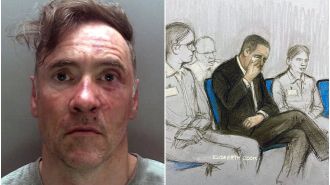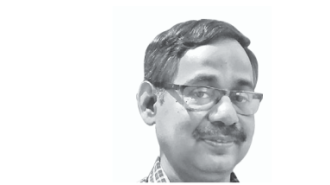How Patients and Doctors Are Navigating the Fallout of the Massive Recall of Philips Breathing Machines
We’ve been reporting on the state’s civil commitment process in partnership with Mississippi Today. These are the most important findings.

In 2021, Philips Respironics recalled its DreamStation breathing machines, along with other sleep apnea devices and ventilators, leaving millions of customers worldwide waiting for replacements. Foam inside the machines could crumble in heat and humidity, sending potentially carcinogenic materials into the lungs of patients.
I spent eight months making a film about this, following sleep apnea patients through airports to doctor appointments. I recorded their home lives, their bedtime routines. I tried to capture the claustrophobic details of the mask that fits tightly over the nose and mouth.
In February 2023, when I first began having conversations with the reporting team investigating the recall about making a film about sleep apnea, I wondered how I would visualize sleep. I could use interviews to spell out the intricacies of what went wrong, but how would I bring the reality of restricted breath to the screen? And why would someone who doesn’t have sleep apnea choose to watch this?
I got part of that answer from one of the film’s participants, Dr. Carol Stark, who said: “Sleep isn’t a luxury. It isn’t optional.”
What these patients need help doing — breathing while sleeping — is something that I took for granted before making this film. As I learned more about the patients who relied on the DreamStation machine and other Philips devices, the heart of the film surfaced at a crossroad between two impossible decisions: continue using something that could be harmful or stop using it and risk heart attacks, strokes or even death.
An investigation by ProPublica and the Pittsburgh Post-Gazette found that the company received thousands of warnings over the span of 11 years but withheld them from the government and the public. In statements, the industry giant said that it acted as soon as it learned of the “potential significance” of the problem and that the machines are unlikely to cause harm.
I have been making documentaries and photo essays for over a decade, and a guiding principle is that if you’re able to capture a person’s day to day, no matter how unrelated it is to the issue, viewers might see them as people not so different from themselves. So I chose to introduce the patients with their histories and hobbies; I reused footage from a professional drummer’s archival videos and captured a couple lap swimming in their 70s. It was important to me to frame the participants as people first — not defined by their health condition. We don’t need to have sleep apnea to connect with them.
How many of us have experienced something unjust done to us but we had to pick up the shards ourselves? “You can do everything right and the people who should be taking care of things are not,” Carol’s husband, Dr. Allen Stark, who also has sleep apnea, said.
Mark Edwards, another patient, demonstrated profound acceptance in order to move through this recall. At times, he heatedly talked about the company, still angry at how its actions have impacted thousands of people; other times, he expressed his belief that the more he suffers the closer he gets to God. “I have one foot in the next life and one foot in this life,” he said, heaving after only minutes of walking.
The film follows these three patients and a sleep medicine specialist, Dr. Radhika Breaden, who described the chaos of the first few days of the recall. Thousands of her patients angrily called with questions that could not yet be answered. “We don’t know what to do,” she said, as bewildered as them. I tried to capture these moments with 14 drone shots that populate the screen in just eight seconds. These rapid clips, both rural and urban landscapes to represent the locations of people affected worldwide, were intended to make the viewer feel the tension and desperation of the moment.
It was crucial to show the disintegration of the foam inside the machine, so I researched YouTube for archival videos from other users. The most disturbing one reveals a once-intact block of foam dissolved into loose, messy particles. To visualize metaphors of these particles, I filmed water droplets spewing out of a sprinkler and details of puddles lit by street lamps.
The most moving sequence to me is of Carol and Allen Stark picnicking and hiking with their grandchildren because it’s tenderly paired with Carol describing her fear: no longer being alive with her grandchildren. It’s a real possibility that tomorrow she could learn that she has a health complication. After all, many other people who used these machines died, developed cancer or came down with respiratory complications that they or their loved ones believe were related to the use of these machines. The Starks are treating their sleep apnea to be able to live, and it was important to show how they want to live.
But my initial challenge — how do you visualize sleep? — still remained. We all sleep. We all breathe. So I looked for metaphors in our world that are universal. Fog representative of breath. Sunset preceding the nighttime rest. A reflection of pillows on a bed. Vistas of waves, mountains and a coastline when Breaden describes REM sleep as “the most stunning, beautiful thing in the world.”
I hope you watch this film because it’s a story for everyone who sleeps.
ProPublica is a nonprofit newsroom that investigates abuses of power. Sign up for Dispatches, a newsletter that spotlights wrongdoing around the country, to receive our stories in your inbox every week.
ProPublica is a nonprofit newsroom that investigates abuses of power. Sign up for Dispatches, a newsletter that spotlights wrongdoing around the country, to receive our stories in your inbox every week.







